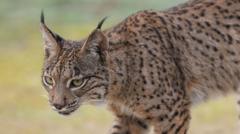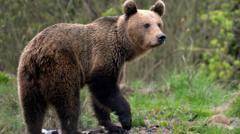The Iberian lynx, once nearly extinct with fewer than 100 individuals, has seen a resurgence, with over 2,000 now in the wild. Conservation programs in Spain and Portugal are pivotal, employing breeding centers and careful monitoring to ensure the lynx thrives. Efforts continue as local wildlife interactions raise challenges.
The Turnaround of the Iberian Lynx: From Near Extinction to Thriving Population

The Turnaround of the Iberian Lynx: From Near Extinction to Thriving Population
A remarkable conservation effort brings the Iberian lynx back from the brink, showcasing innovative strategies to protect and restore this endangered species.
The Iberian lynx, a striking feline characterized by its leopard-like spots, is experiencing a hopeful revival in Spain and Portugal with over 2,000 individuals now roaming the wild. This represents a significant leap from fewer than 100 lynxes just two decades ago, during a period when the species was teetering on the brink of extinction.
Rodrigo Serra, who oversees the Iberian lynx reproduction program across the two countries, reflects on the dire circumstances faced by the species. "At our lowest point, there were only 25 females old enough to reproduce," he recalls, emphasizing the urgency of their efforts. Once found only in fragmented populations, conservation strategies have united these animals onto a road toward recovery.
The decline of the Iberian lynx was primarily due to habitat loss driven by agricultural expansion, increased road fatalities, and significant decreases in their main prey—wild rabbits. A rampant pair of rabbit pandemics decimated their numbers by 95%, leading to the lynx's critical state. By 2005, Portugal had no lynxes left; however, it was the same year Spain marked a milestone with the first lynx litter born in captivity.
In response, Portugal formulated a national conservation plan, leading to the establishment of a National Breeding Centre for Iberian lynxes in Silves, Algarve. The center operates with the dual aim of preparing the lynxes for their eventual return to the wild while facilitating healthy breeding pairs. Serra notes the sensitive nature of these animals, often whispering around their enclosures to avoid causing stress. Ironically, inducing some stress may be beneficial, as the team carefully trains the lynxes to avoid human contact, reinforcing their wild instincts and survival skills.
Feeding practices further ensure they remain wary of people, using a tunnel system for food distribution that reinforces the message: "A lynx should be a lynx, not treated like a house cat." Genetic considerations determine their release locations, helping fight against inbreeding and disease.
Pedro Sarmento, who has dedicated three decades to studying the lynx, acknowledges both the beauty and the challenges of working with this iconic species. With successful breeding initiatives leading to the release of lynxes on private lands, conservationists must negotiate with landowners. Although there have been isolated instances of lynxes preying on livestock, efforts to fortify coops and monitor lynx behavior have managed to mitigate these concerns.
The story of Lítio, one of the first successfully reintroduced lynxes, exemplifies both resilience and the complexities of the project. After initially losing track of him, he migrated back to Spain's Doñana National Park, where he was treated for illness. Upon his third release, Lítio settled down, found a partner, and contributed to the growing population of Iberian lynxes, leaving a legacy of cubs in his wake.
Thirty years after Spain initiated its lynx conservation efforts, the species now boasts a robust population no longer considered endangered. Sarmento is optimistic, envisioning a future where enough individuals exist—5,000 to 6,000 according to conservation guidelines—by 2035 to secure the lynx’s favorable conservation status.
The work, however, is far from complete. Last year, road incidents accounted for 80% of known lynx fatalities, highlighting ongoing threats. Nonetheless, the collective success of dedicated conservationists signals that proactive measures can lead to a hopeful future for the Iberian lynx and its habitat. In a journey from peril to promise, these teams find solace in witnessing the lynxes thriving once more in their natural environments.




















